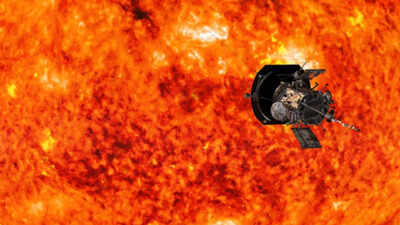Nasa’s parker solar probe has made headlines against by successfully completes an autonomous close approach to the sun and confirming that all its systems are operating Normally. On September 18, 2025, The Spacecraft Transmitted a Status Signal to Flight Controllers at the Johns Hopkins Applied Physics Laboratory (APL) in LaureL, Maryland, Maryland, Maryland, WHERE WAS DESIND, And continues to be managed. This achievement marks Another Milestone in Parker’s Ongoing Mission to Explore the Sun’s Atmosphere, or Corona, and Study Solar Activity in unprecedened detail. By frying closer to the sun than any previous spacecraft, parker solar provides critical data on Solar wind, flares, and space weather, advancing humanity ‘ Both space and earth.
Nasa ‘s parker solar probe hits record-breaking speed Reaching 687,000 km/h
DURING Its Recent Solar Encounter from September 10 to 20, Parker Solar Proble Probe Matched Its Record-Setting Speed of 687,000 kilometers per hour (430,000,000 miles per hour). This Extreme Velocity, Achieved during Close Approaches to the Sun, Had Previous Been Reached on December 24, 2024; March 22, 2025; And June 19, 2025. The spacecraft remains in a highly Elliptical Orbit Around the Sun, Continuous Conducting Observations that Scientists Hope willy Slar Phenomena and Slar Phenomena and SpaCe White. Nasa is currently reviewing the mission’s next millstones, Extended Beyond 2026.
Parker solar probe’s fourth flyby reveals key solar insight
Parker solar probe’s latest flyby marked its fourth close approach to the sun’s outer atmosphere, or coron. DURING this encounter, the spacecraft’s Four Scientific Instrument Packages Collected Detailed Data on Solar Wind, Solar Flares, and Coronal Mass Ejections. This period is particularly significant as the sun entensThe observations gathered are vital for understanding the fundamental physics driving space weather events. These phenomena can affect astronauts, satellites, air travel, and power grids on earth. By Studying Solar Activity Directly From Within The Corona, Parker Provides Critical Insights That Enable Better Prediction of Solar Storms and Improve Safety for Fight for Future Deeep-Species MON MON MON MON and MARS.
Parker Solar Probe: Mission Overview
Launched in 2018, Parker Solar Probe is the first spacecraft designed to fly directly through the sun’s corona. It blie closer to the sun than any previous spacecraft, gradually Reaching Velocides Approaching 700,000 kilometers per hour. This unmatched proximity allows scientists to study solar activity in unprecedened detail.The mission is part of nasa’s living with a star (LWS) program, which focuses on understanding aspects of the Sun-Earth system that impact life and success. Managed by Nasa’s Goddard Space Flight Center in Greenbelt, Maryland, Parker is operated by Johns Hopkins APL, where it was designed and built.
Undersrstanding space weather with parker solar probe
Nasa Emphassies that Parker’s Measurements of the Solar Wind and Solar Events are Critical for Undersstanding High-energy space weather. These Studies Directly Contribute to Safeguarding Astronauts, Protecting Satellites, and Mitigating Risks to Infrastructure on Earth. By Unraveling the Sun’s Complex Behavior, Parker Solar Probe is Paving The Way For Safer and More Predictable Human and Robotic Space Exclusion.Parker Will Begin Returning Detailed Science Data From This September 2025 Encounter Starting September 23, Providing Researchers with New Insights INTO SOLAR DINIGHTS INTO SOLAR DINAGHTS INTO SOLAR DINAMICS and Their Influence on Earth.Also read | James Webb Space Telescope Reveals Dark Beads and Star Patterns in Saturn’s Atmosphere



